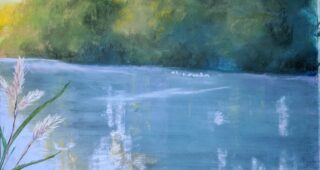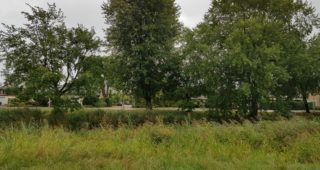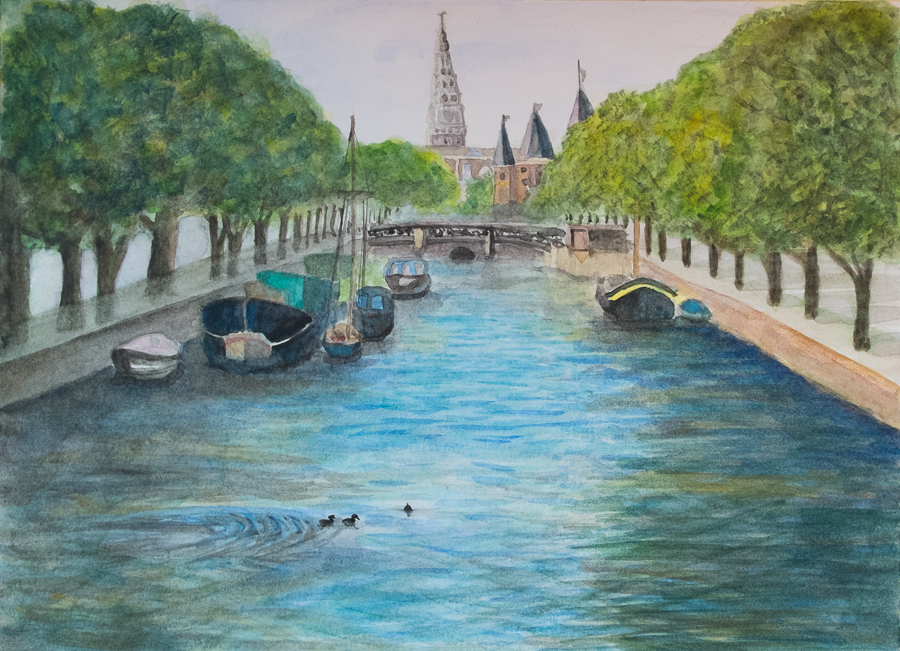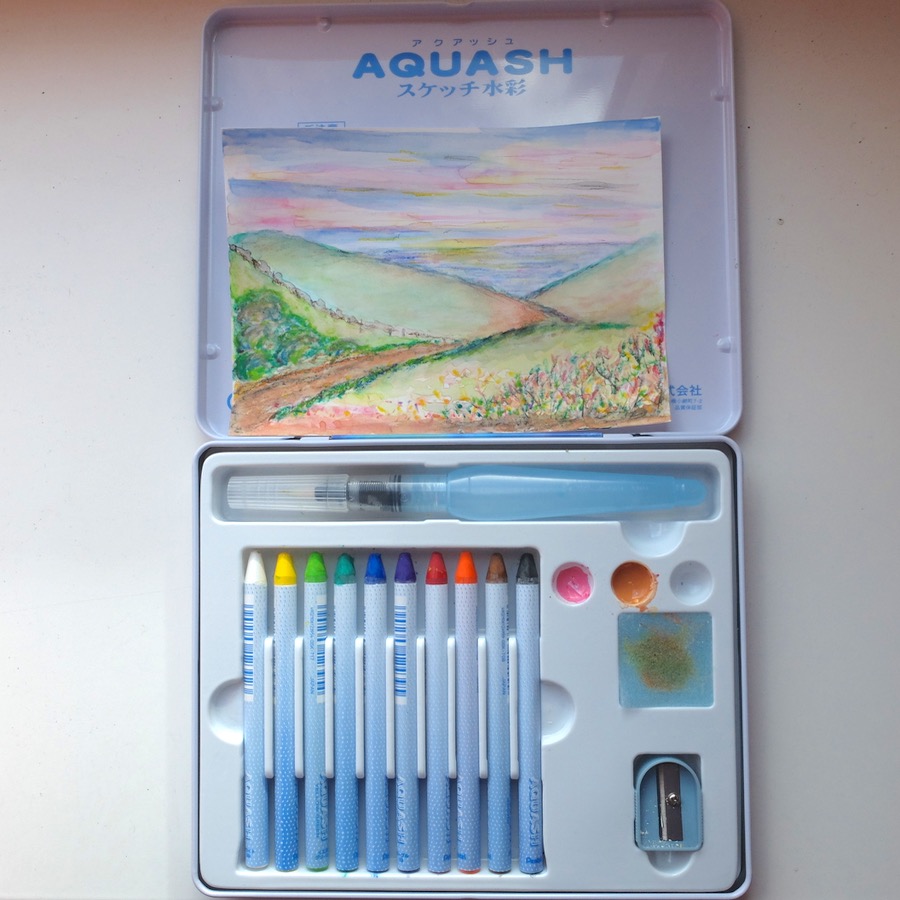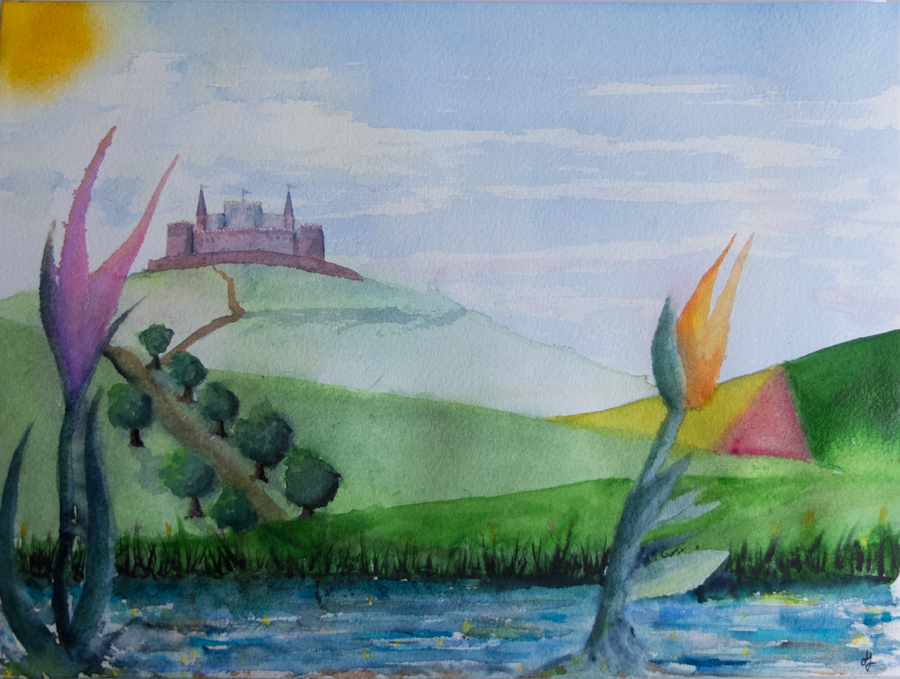What is it called when you make digital paintings? Because that’s something that I’ve been doing a lot in the past few weeks, ever since I bought that iPad Pro and pencil during my holidays.
I love drawing and painting, and have been doing it on and off over the years. A few years ago I mainly worked with soft pastels (see for example Girl with a hat) and after that I tried my hand at watercolour painting (see for example Robin). Those mediums are quite different from each other and both are rather challenging and fun to do. But it’s also sort of messy and once you have put your brush to paper, you cannot go back, the mark is there. Sure, that is also part of the fun, but it costs a lot of paper when you’re learning. And you either need to have a dedicated space for it or set things up when you start working. We live small, so I don’t really have enough space to be able to have a permanent painting space. Right now it’s my sewing space.
Enter digital art. While drawing and painting digitally has been done for a long time already via, for example, connecting a WaCom tablet to your PC, that was more something that professional designers and artists did. Drawing on your personal digital device was still in its early stages. The Samsung Note phone series offered a stylus to draw with that was pressure sensitive and that did not have a lot of lag, but it still did not feel quite natural. Also, while the screen was big for a phone, it was small for painting. And then, a few years ago, the iPad Pro was created and the pencil that came with it. No more noticeable lag, a nice, rather large painting surface, and, also important, the software to make it all come together.
The app Procreate has been available for iOS for a long time already, but now it shines with the Apple pencil. The nice thing about Procreate is that you can create and customise your own brushes. Many artists have already done that and shared their brush creations online.
So when I started painting on my iPad, I was immediately drawn to soft pastel (-like) brushes. I have downloaded a few that are quite good, for example, the Pastel Artist Set (not free). I also use some of the brushes made by Liz Kohler Brown on SkillShare (you can create a free account to get the brushes and cancel before the paid subscription begins. I do recommend staying around for her classes too!).
So this is what I’ve been working on during the past few weeks (click to enlarge):
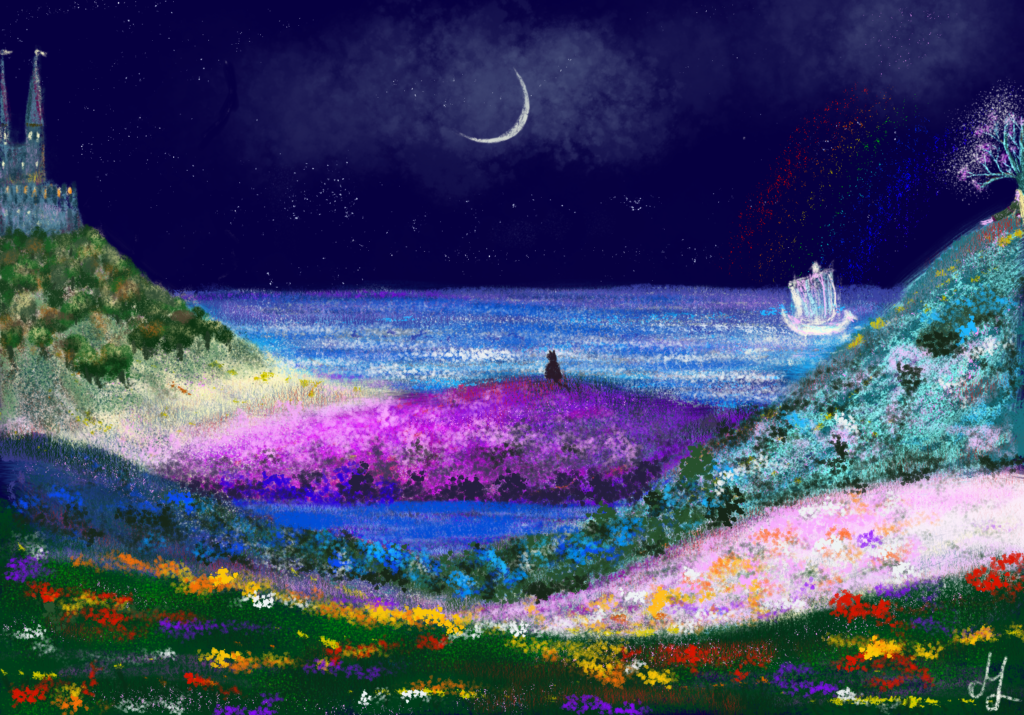
Night at Sea 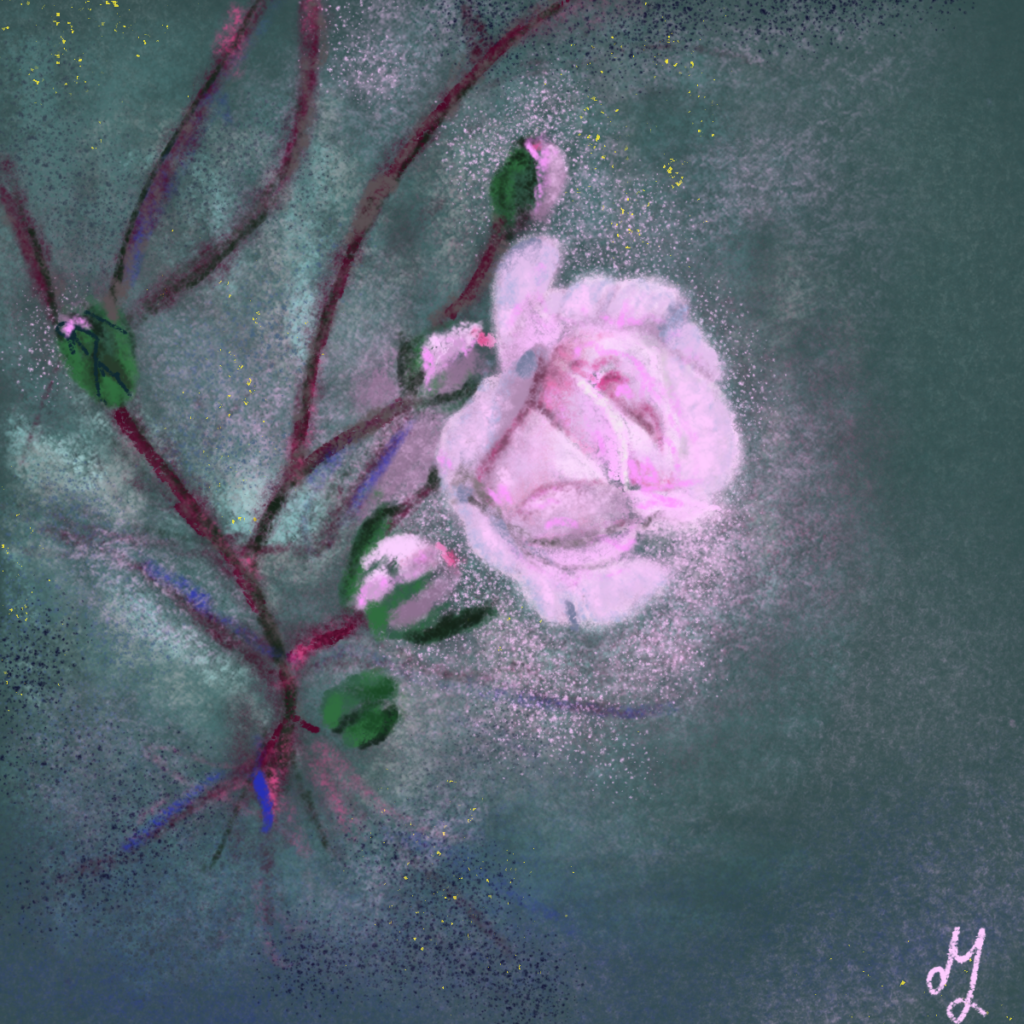
Rose 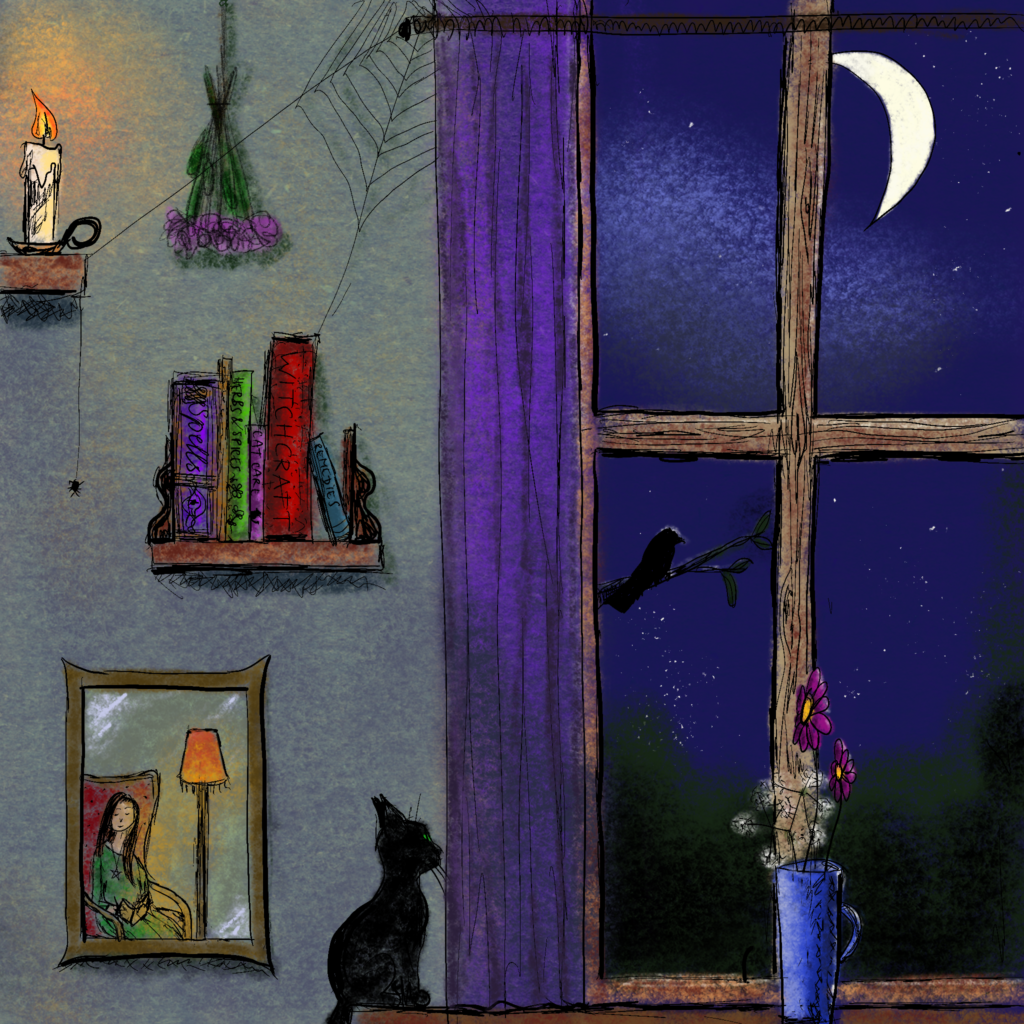
The Witching Room 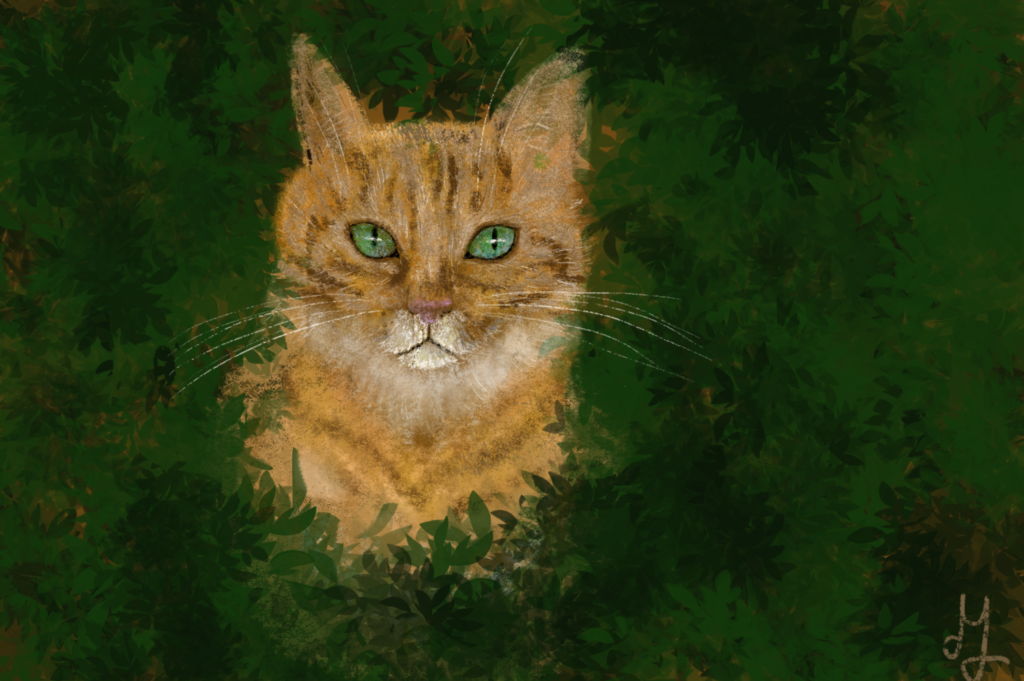
Hidden. 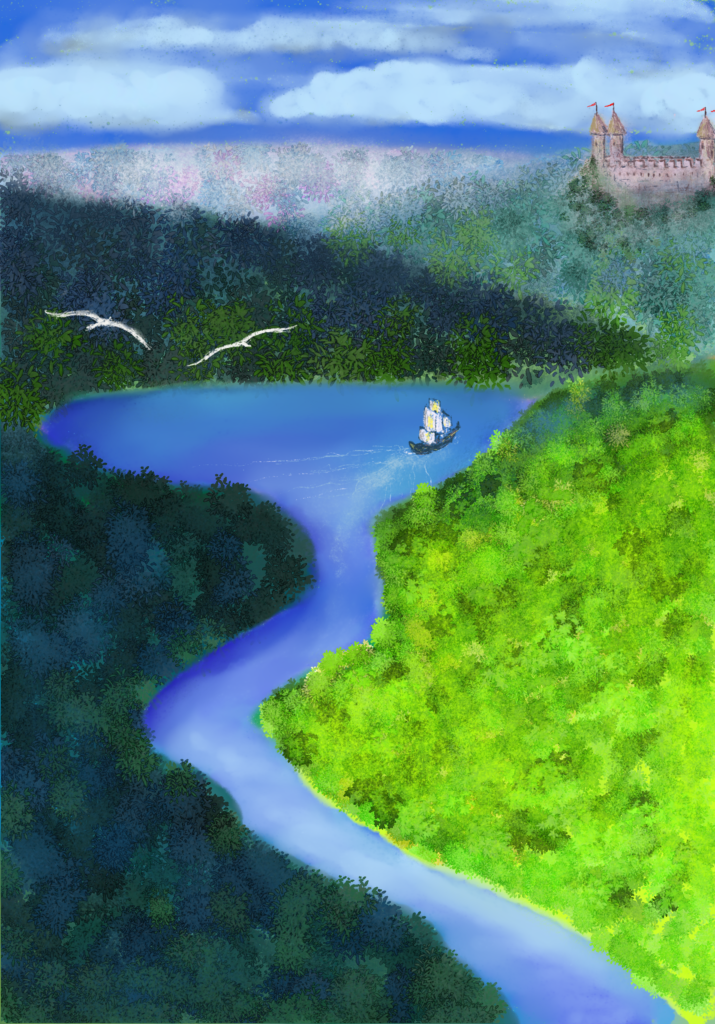
Quest 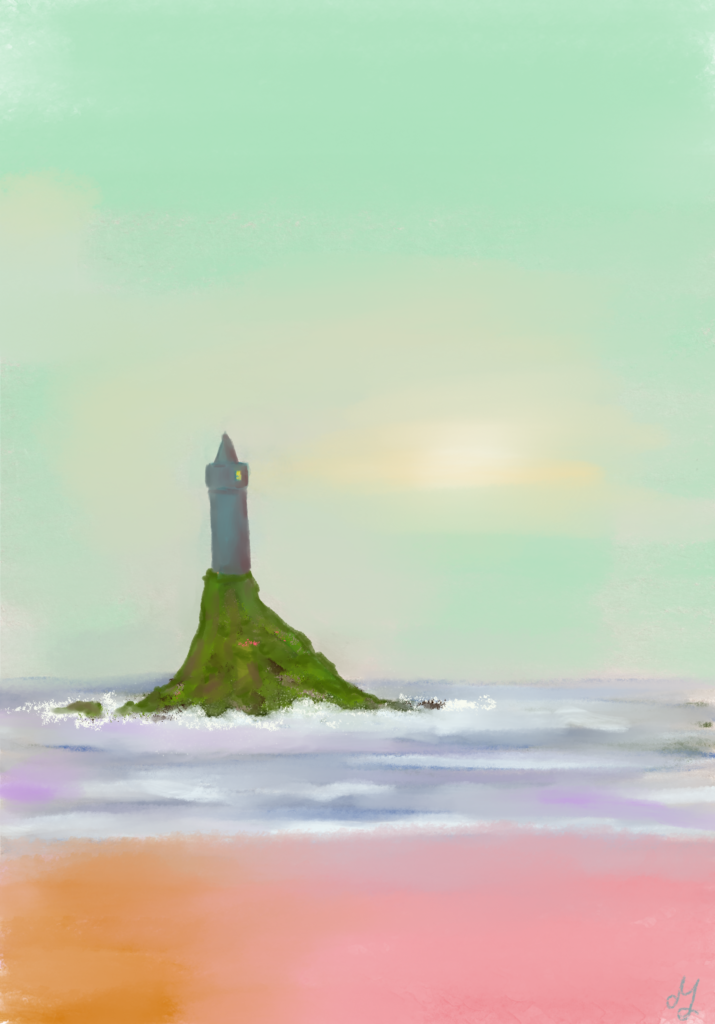
Lighthouse 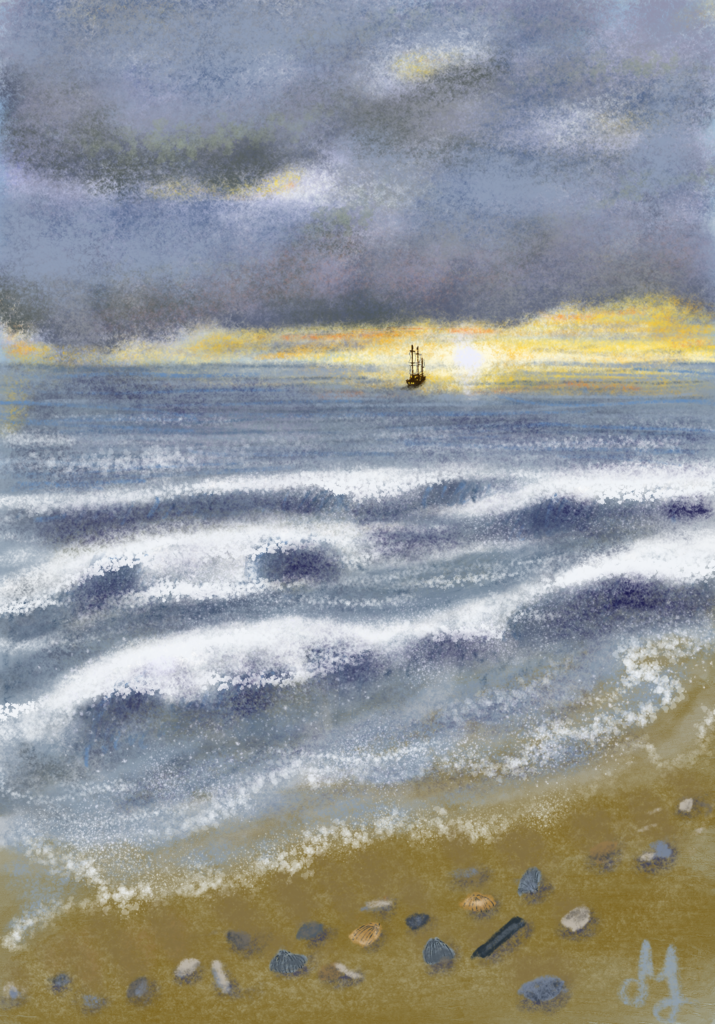
At the Beach 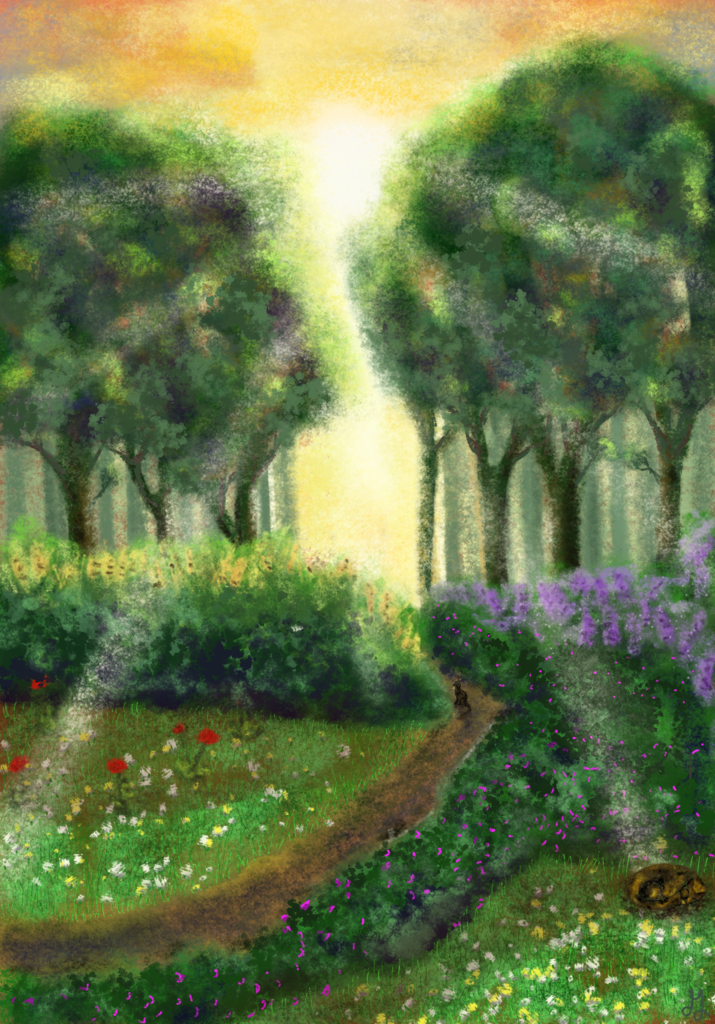
Toward the Light 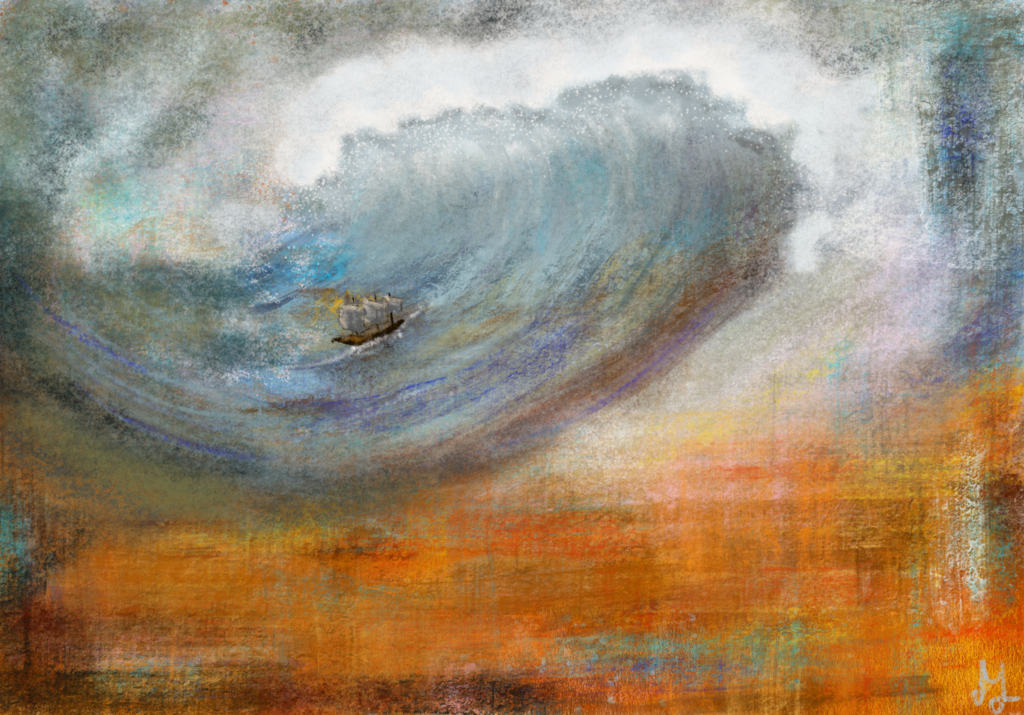
Wave 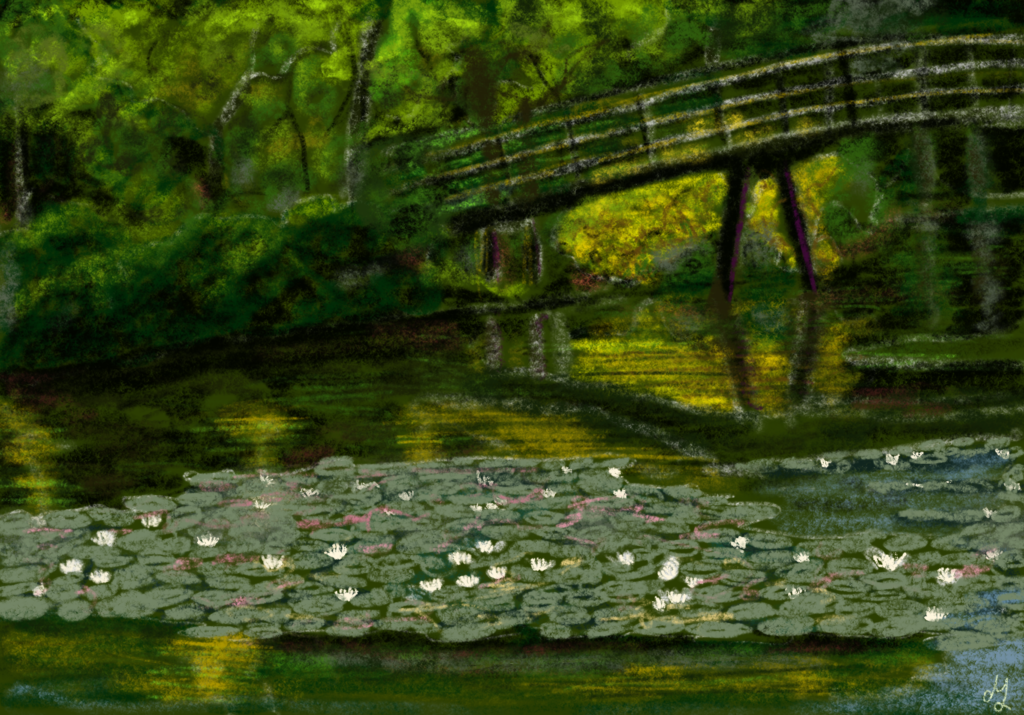
Haagse Bos 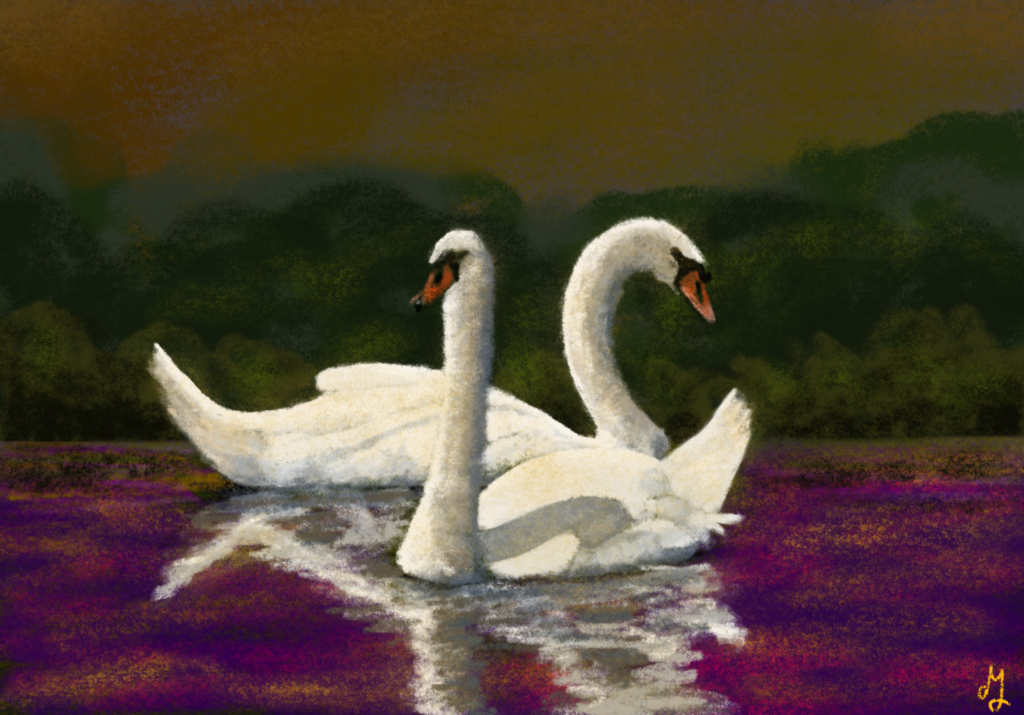
Swans 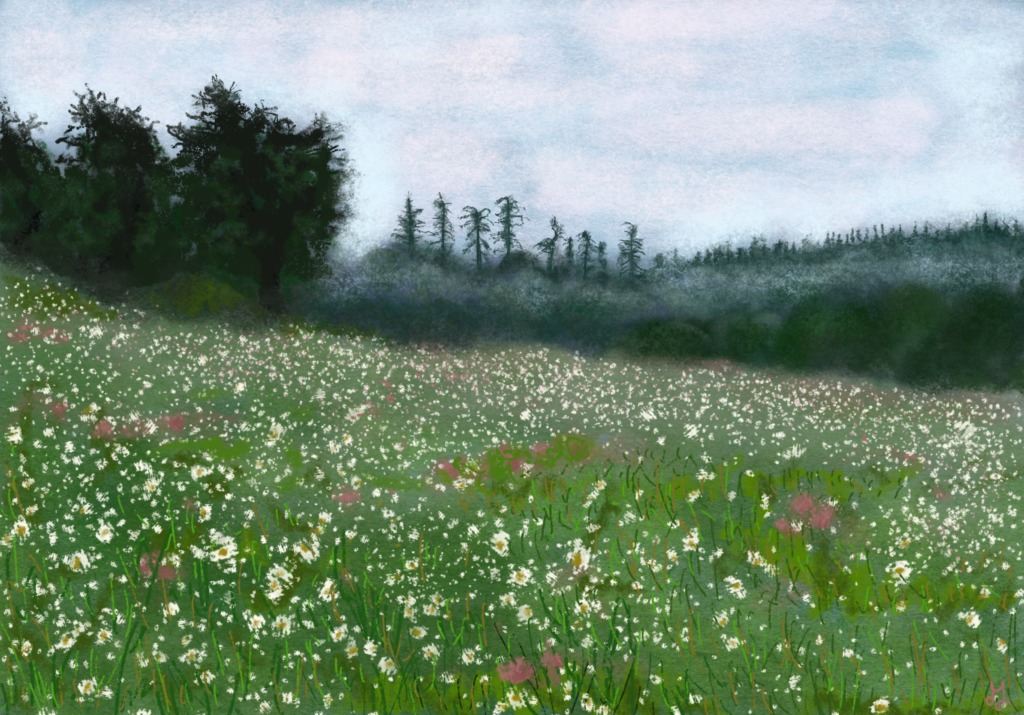
Flower field
I’ve mostly been painting with ‘standard’ pastel brushes, to stay close to the physical medium. Of course there are more possibilities when going digital, but I want to improve my skills, not bypass them for a quick result. One digital feature I do use though is layers. It’s great to be able to add as many layers as you want and even rearrange them. Playing with what shines through, or editing the colour of the background paper is very educational.
Some of these paintings are based on photographs. In those cases, I have sketched the rough outlines of the subject with a light grey pastel in one layer, and then I paint it in another layer. I do add my own twist usually but I try to stay true to the original picture as well, taking note of how lighting works and what the perspective is like.
Other paintings are just intuitive improvisations from inside my own head. Can you pick them out? I love fairy tale and dream-like subjects, and playing with colours and textures, of course. I just want to learn how to bring those to the ‘paper’ better, so I have to pay close attention to reality. Imitating, adding my own intuitive twist. It’s so much fun!
I have noticed that this really soothes me too. If I have had a busy day, digipainting brings me back into a quiet flow, just like when making music. It’s less noisy, though, which is a plus. And very easy to pick up and just do.
